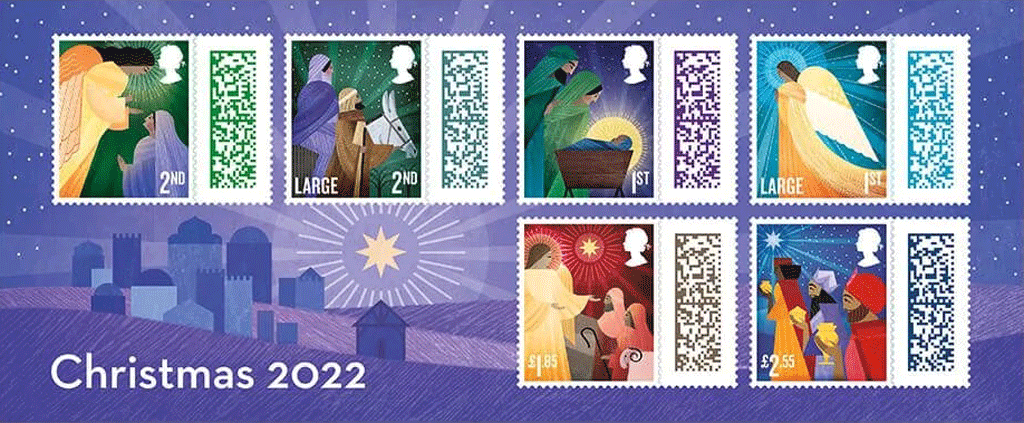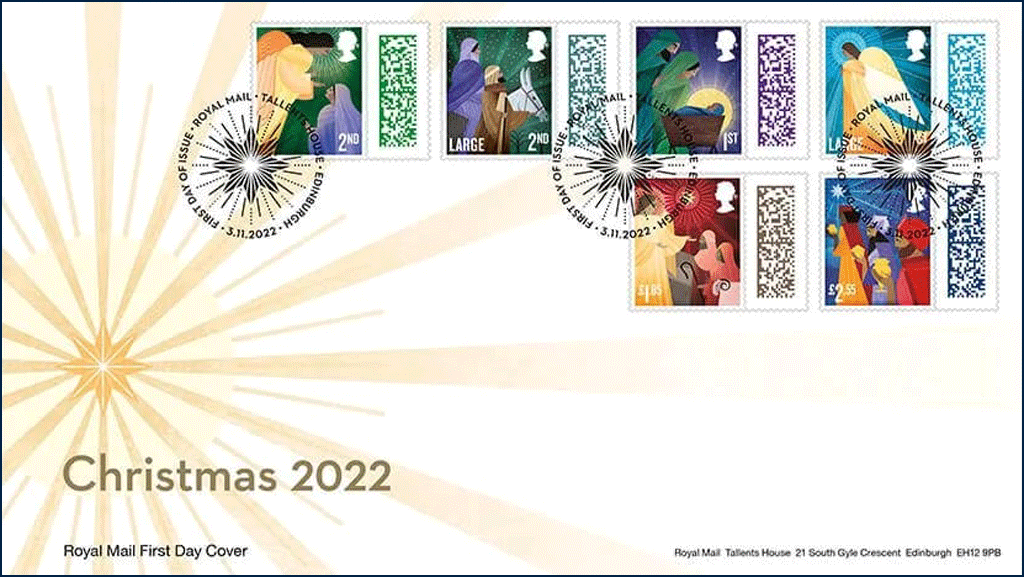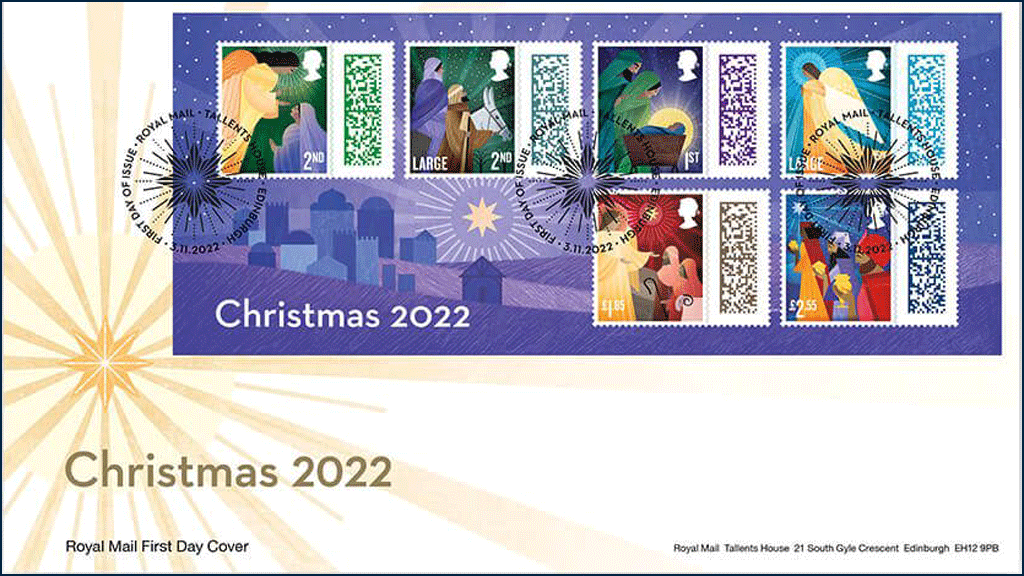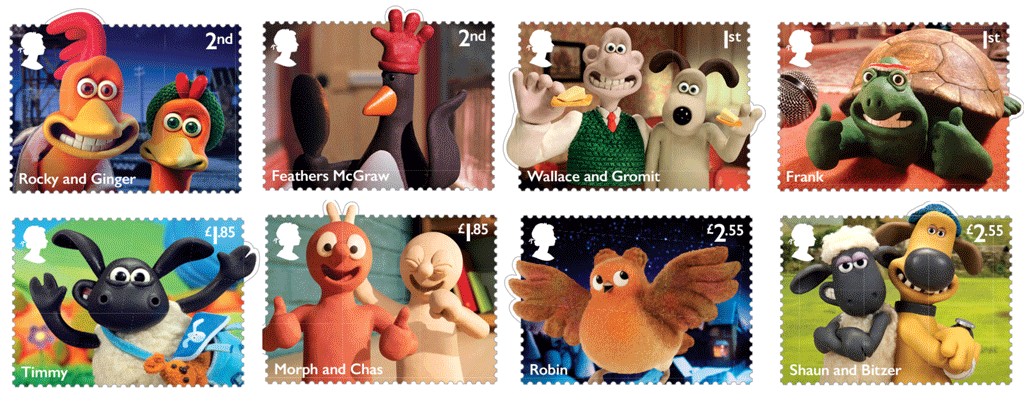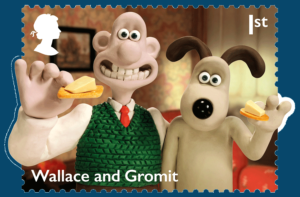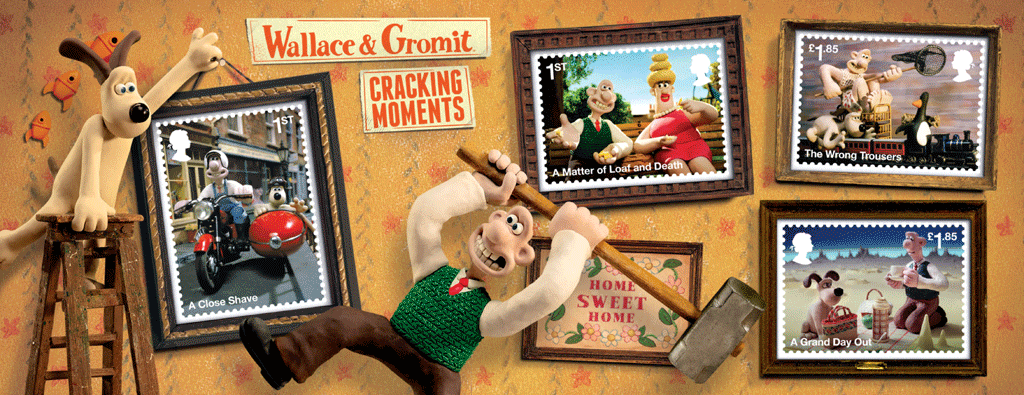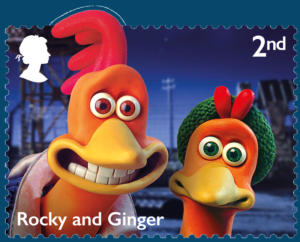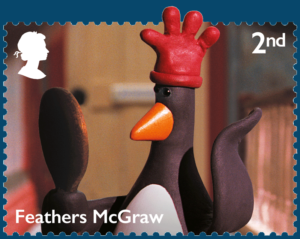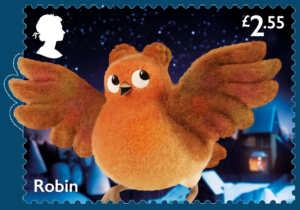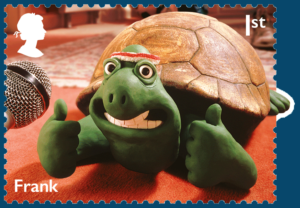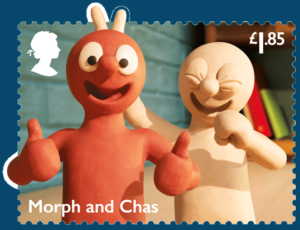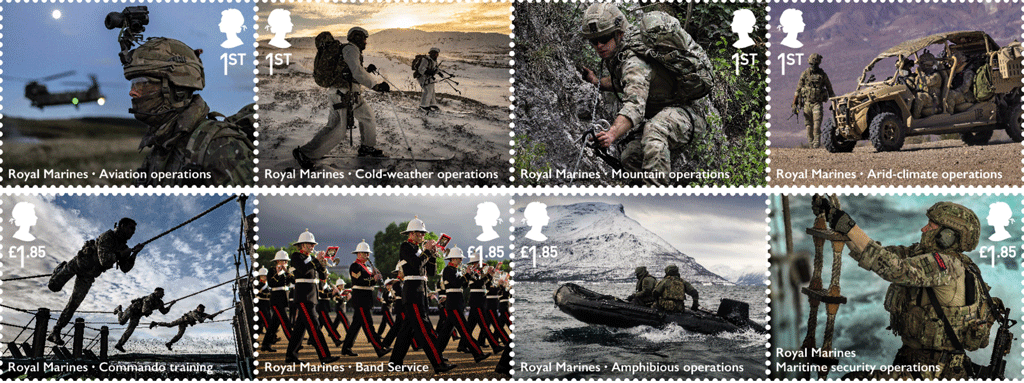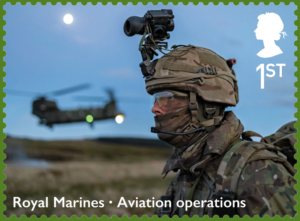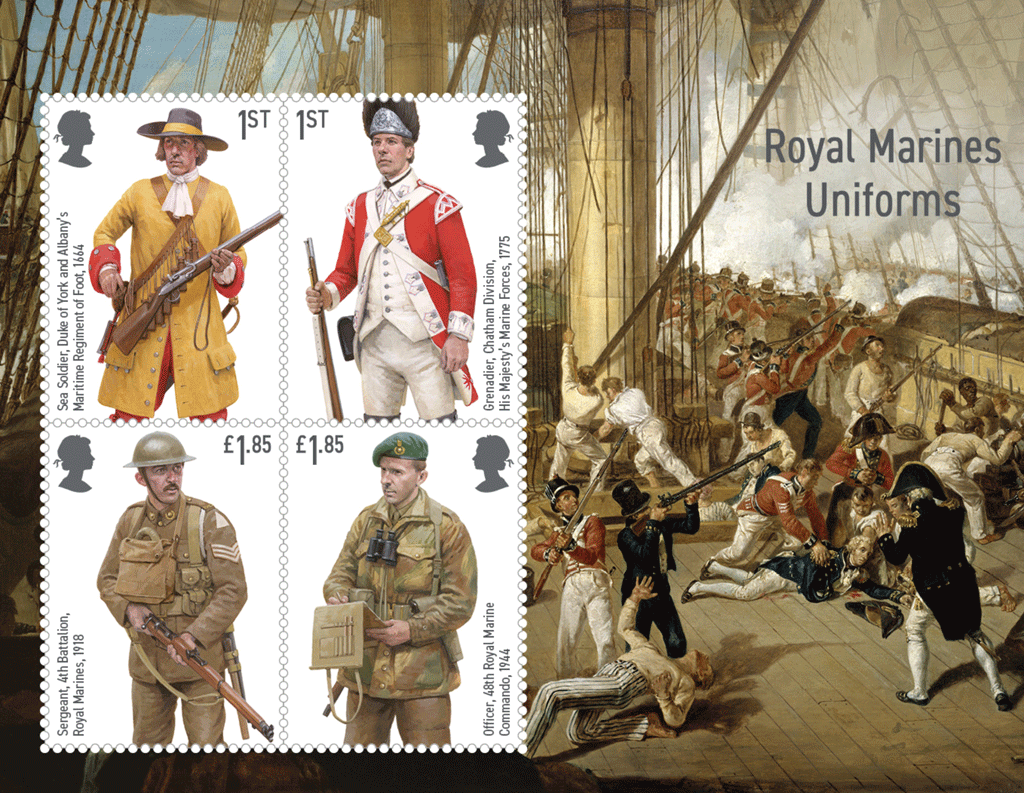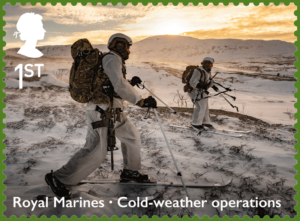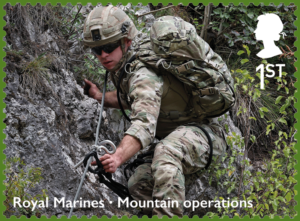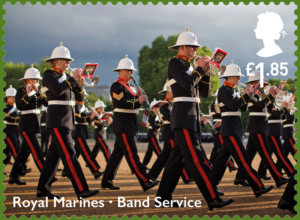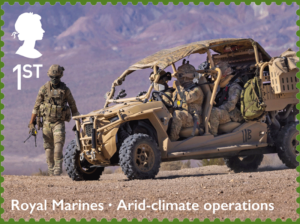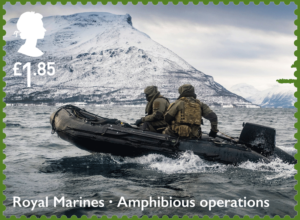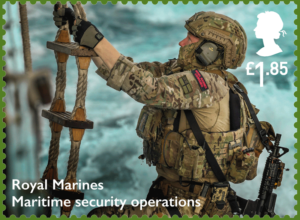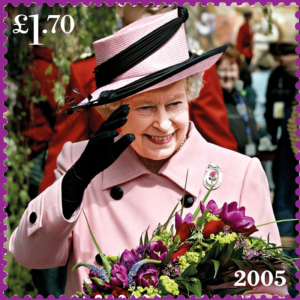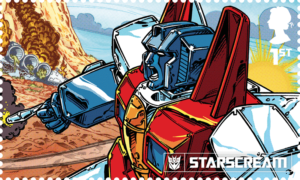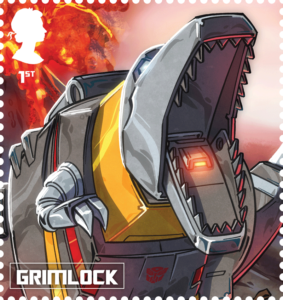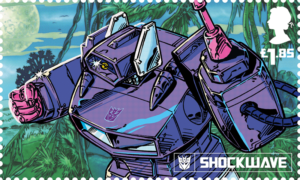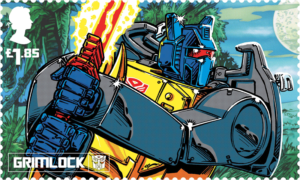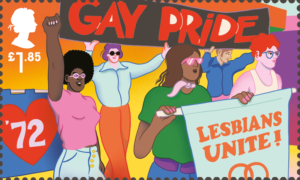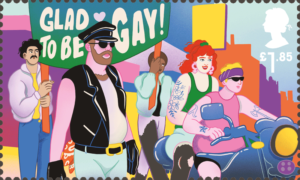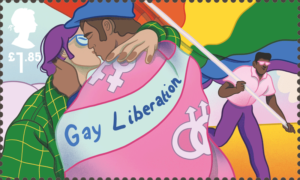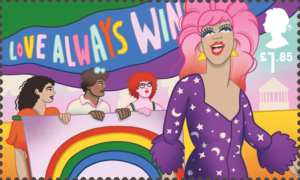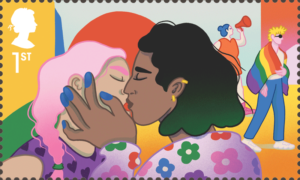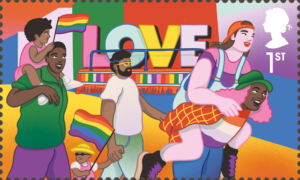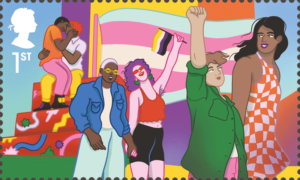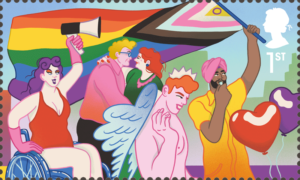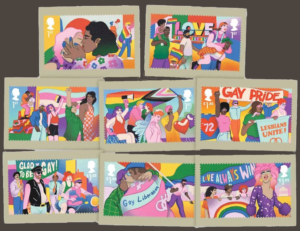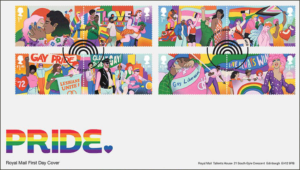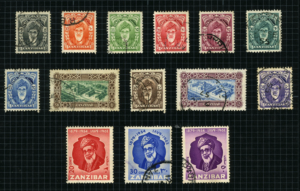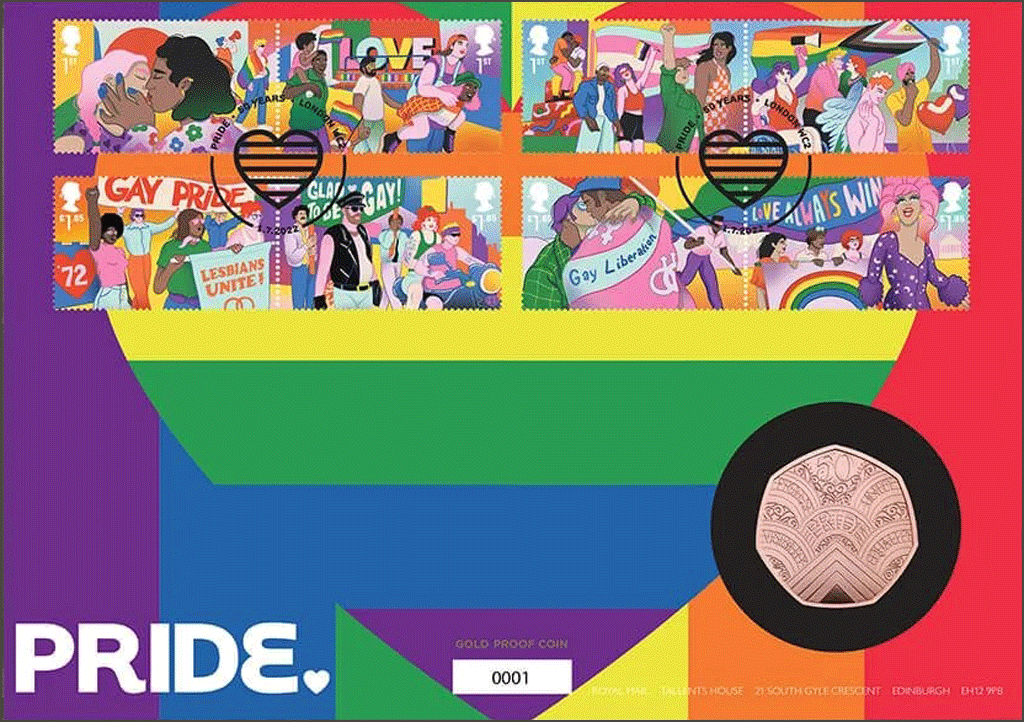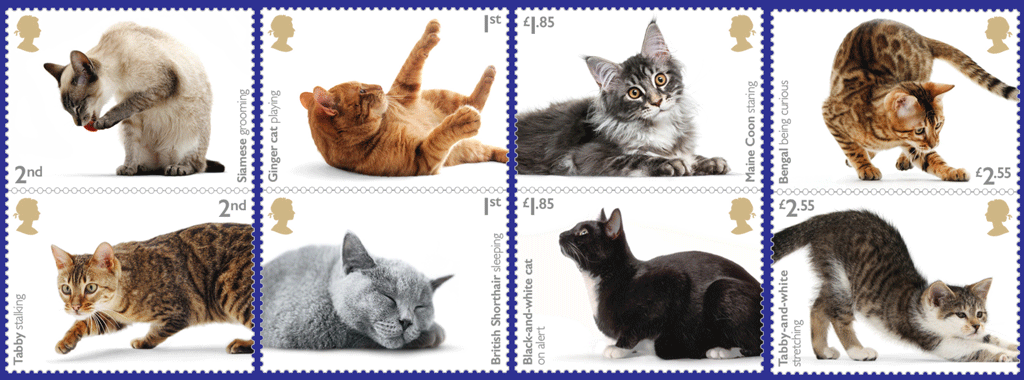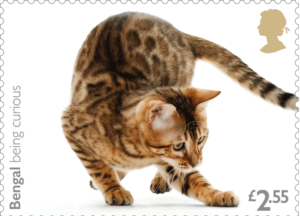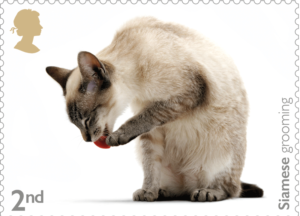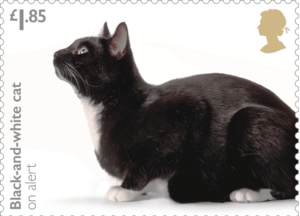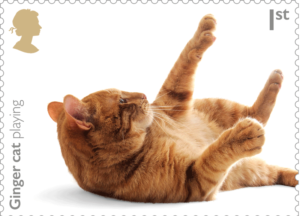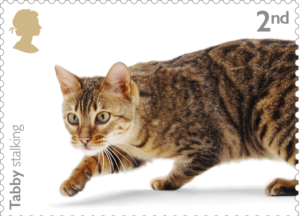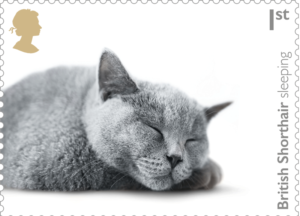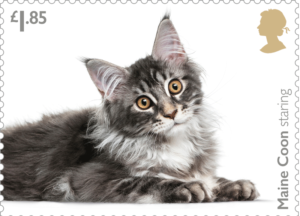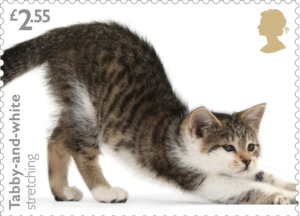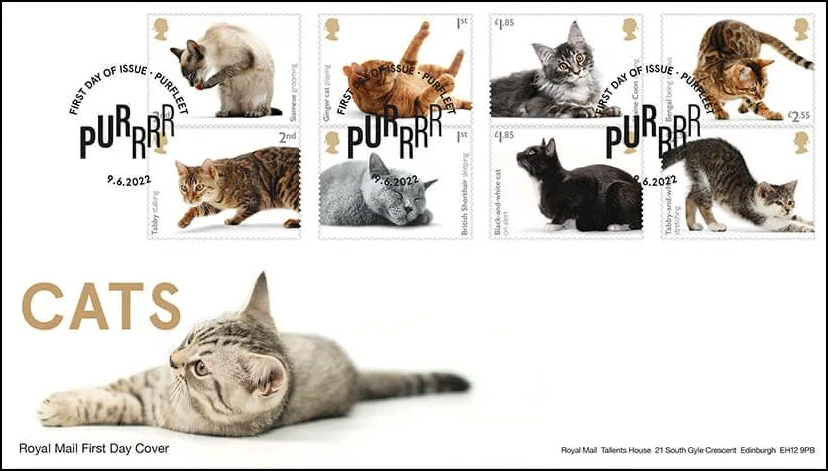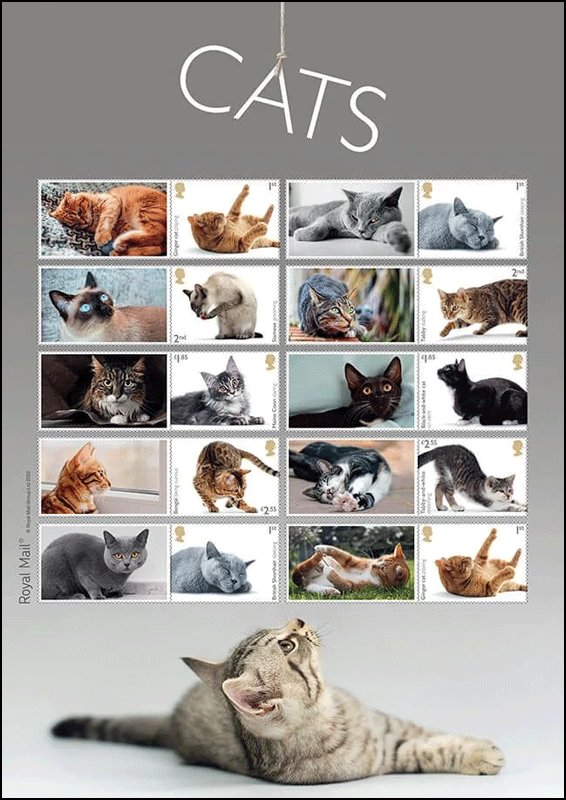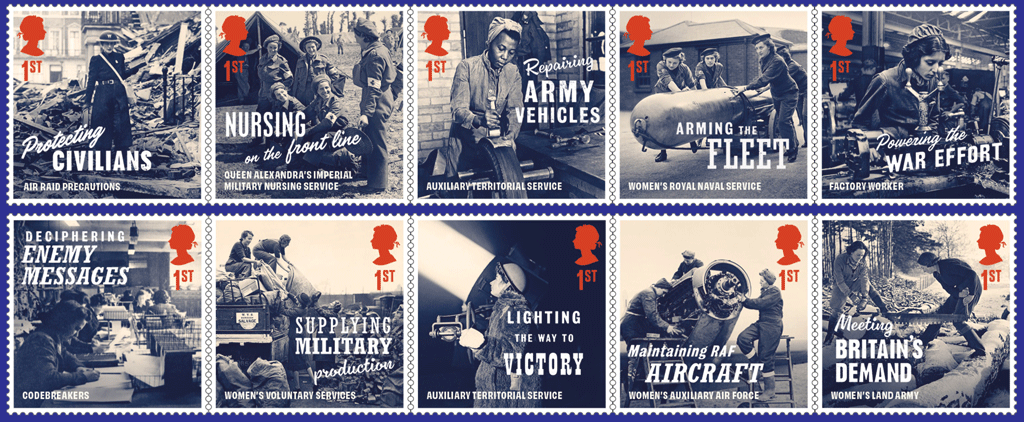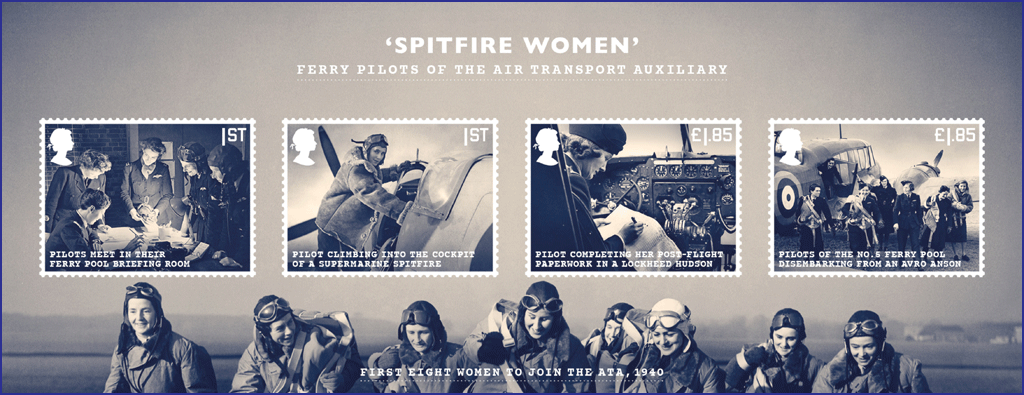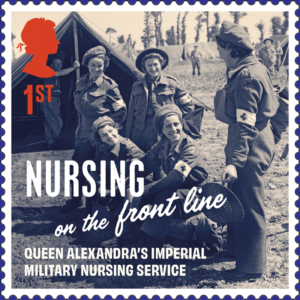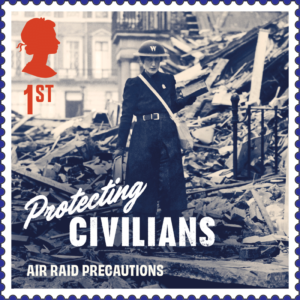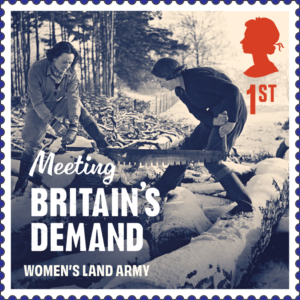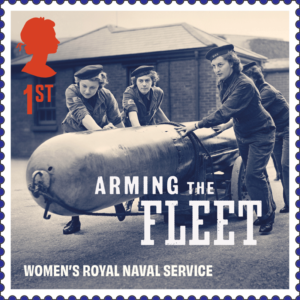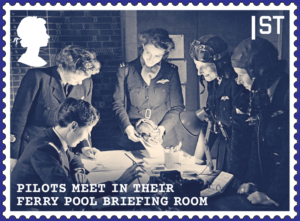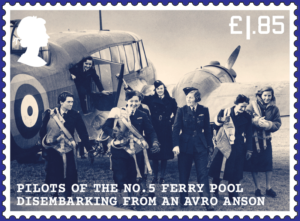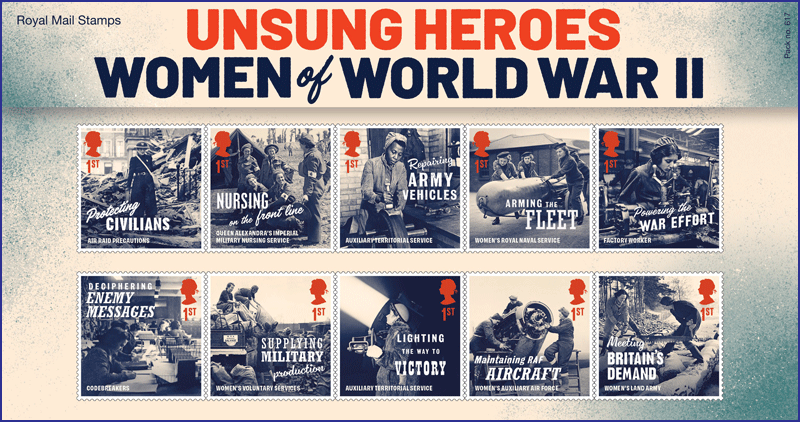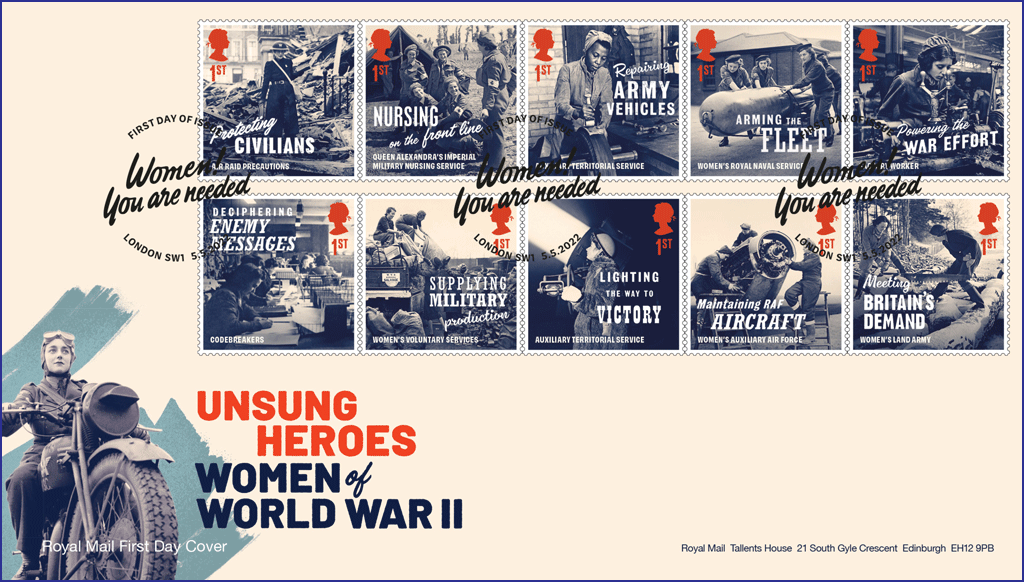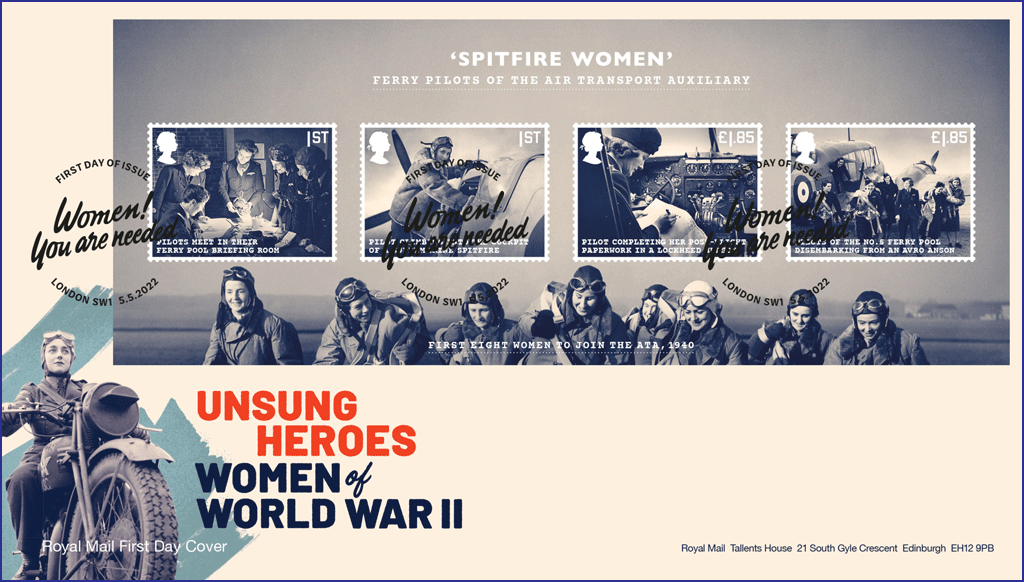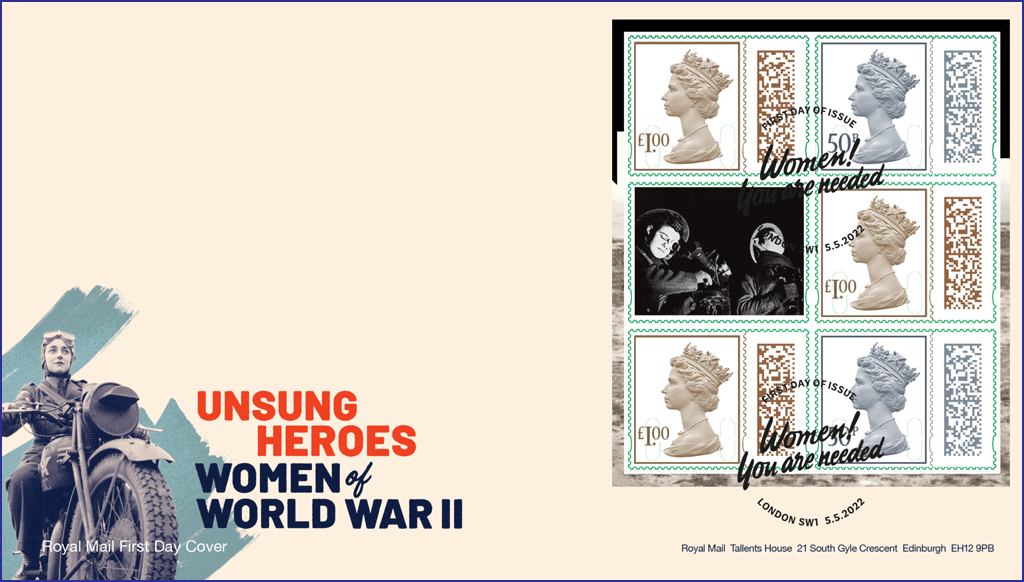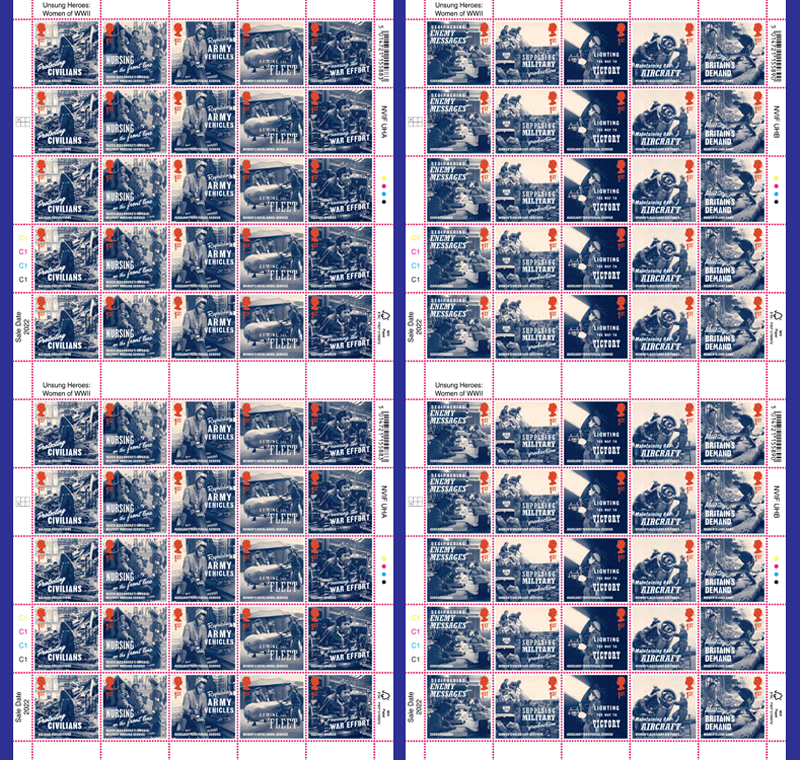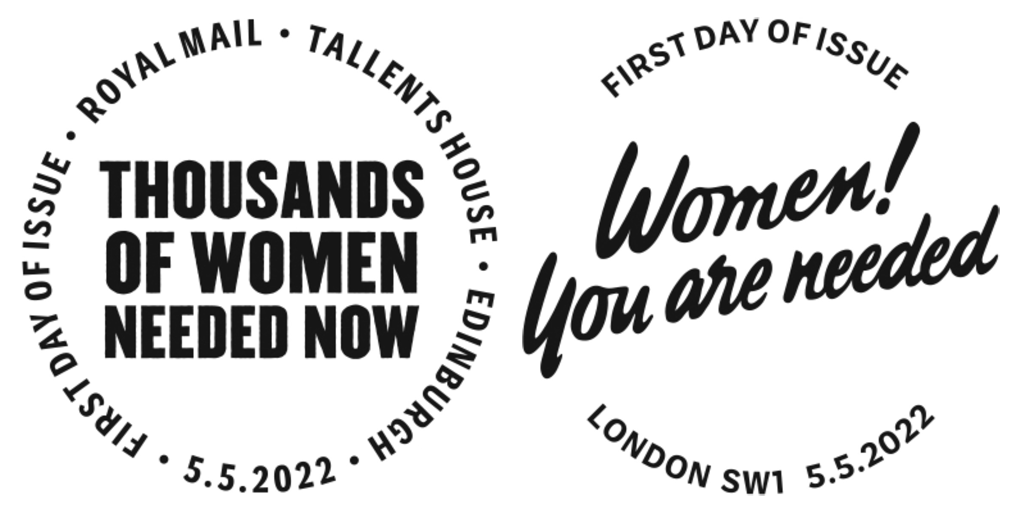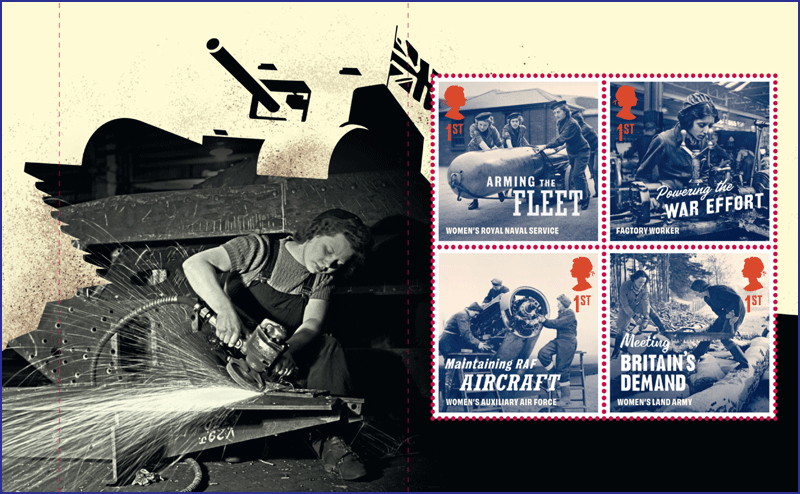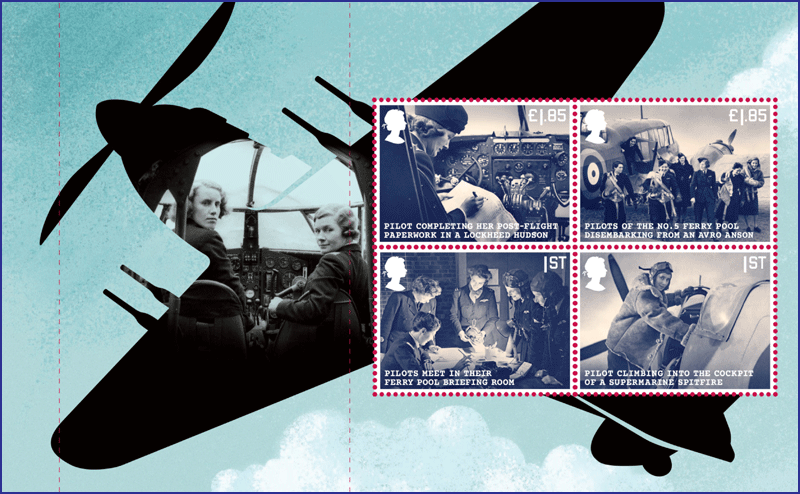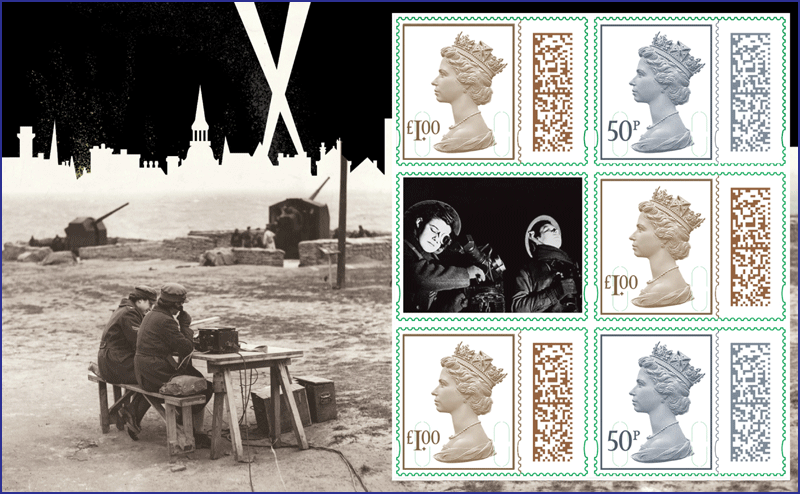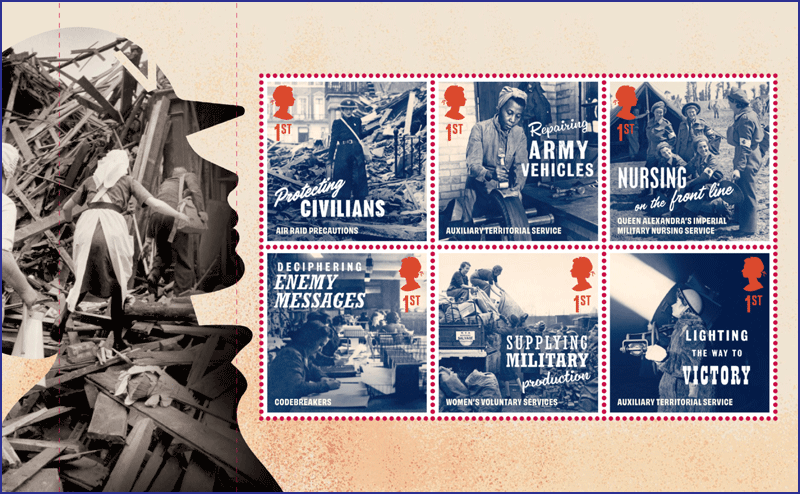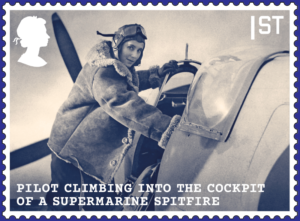[press release] [click on any of the pictures for larger versions]
New Stamps from Royal Mail Explore Migratory Birds — The Spring And Summer Visitors to The UK
- Issue Date: 7 April 2022
- The 10-stamp set showcases the diversity of migratory birds that visit the UK
- Bird migration is the annual, seasonal movement of birds along predefined routes, known as flyways, between their breeding and non-breeding grounds
- Bird migration has fascinated and baffled naturalists for centuries
The stamps were exclusively illustrated for Royal Mail by Irish ornithologist, Killian Mullarney
- The stamps will be available at www.royalmail.com/migratorybirds, by phone on 03457 641 641 and 7,000 Post Office branches across the UK
 Royal Mail has issued a new set of 10 stamps depicting Migratory Birds, that explore the spring and summer bird visitors to the UK.
Royal Mail has issued a new set of 10 stamps depicting Migratory Birds, that explore the spring and summer bird visitors to the UK.
The 10 featured birds have been exclusively illustrated in detail for Royal Mail by Irish ornithologist Killian Mullarney, one of Europe’s best-known bird artists. His work has featured in the Collins Bird Guide and on stamps issued in the Republic of Ireland.
The stamps showcase the diversity of migratory birds that arrive in the UK; from seabirds that migrate along the UK’s coastline, such as the Arctic Skua and Arctic Tern, to the 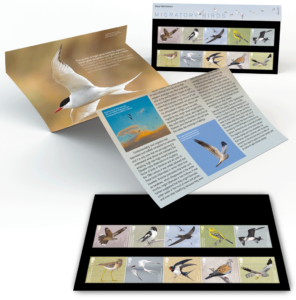 exceptionally rare bird of prey, Montagu’s Harrier. [Shown on the right is the Presentation Pack.]
exceptionally rare bird of prey, Montagu’s Harrier. [Shown on the right is the Presentation Pack.]
David Gold, Director External Affairs & Policy, Royal Mail, said: “The migratory journeys of the birds featured on these stamps are truly amazing. Their annual travels have fascinated and baffled naturalists for centuries. It is only now that we are beginning to understand what drives and maintains this amazing, high-risk–high-reward behaviour. We hope that these stamps ignite a new interest in this remarkable phenomenon.”
A miraculous journey
Bird migration is the annual, seasonal movement of birds along predefined routes, known as flyways, between their breeding and non-breeding grounds.
It is clear that migration is a perilous venture for birds, whatever their size. The numerous hazards to overcome include topography, sea crossings, inclement and extreme weather, food shortages, predators and hunting by humans, to name a few. Migration is a costly behaviour both in terms of the energy needed and also higher risk of mortality that it involves. Arguably, migrant birds are more susceptible to environmental change than their resident counterparts because these arduous migrations and dependence on different sites at different times of the year place them in multiple jeopardy.
For migration to exist in many different birds, the evolutionary benefits ought to outweigh the costs, and a growing body of evidence shows that to be the case. The seasonal availability of surplus food at higher latitudes and a favourable climate for breeding prove attractive and advantageous to many species. Migration allows birds to find themselves in their preferred climate and take advantage of seasonally abundant food, while simultaneously escaping the threats of local competition from other animals.
The stamps will be available from today (7 April) at www.royalmail.com/migratorybirds, by phone on 03457 641 641 and at 7,000 Post Offices branches across the UK.
Stamp-by-stamp:
Arctic Skua
Stercorarius parasiticus
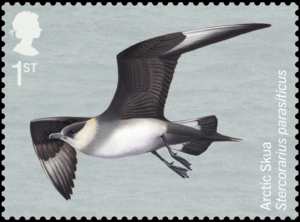 A rakish seabird breeding in northern Scotland and migrating around the UK’s coasts. A pirate of the seas, eating mainly fish it steals from other birds by harassing them in flight. A decline in sand eels has affected it and other seabirds, and the spread of its predatory relative, the great skua, has also had an impact.
A rakish seabird breeding in northern Scotland and migrating around the UK’s coasts. A pirate of the seas, eating mainly fish it steals from other birds by harassing them in flight. A decline in sand eels has affected it and other seabirds, and the spread of its predatory relative, the great skua, has also had an impact.
Migration: Arrives in April, leaves in August–September. Winters off the west coast of Africa, down to South Africa. Some birds cross the Atlantic, but most follow the coast of Europe and Africa.
Arctic Tern
Sterna paradisaea
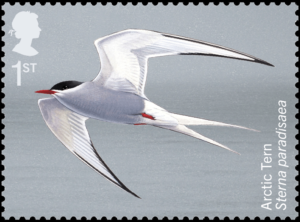 A stunning dainty white seabird with buoyant agile flight. Dives into the water to catch small fish. Nests mostly in Scotland and Ireland, with some in Wales and England. Migrates along the UK’s coastline and often seen on inland lakes. Threats include commercial fishing of sand eels, which has been linked to food shortages, predation by the invasive American mink and climate change.
A stunning dainty white seabird with buoyant agile flight. Dives into the water to catch small fish. Nests mostly in Scotland and Ireland, with some in Wales and England. Migrates along the UK’s coastline and often seen on inland lakes. Threats include commercial fishing of sand eels, which has been linked to food shortages, predation by the invasive American mink and climate change.
Migration: Arrives in May–June, leaves in July–October. Winters in the Southern Ocean off the pack ice of Antarctica, with some British birds reaching Australia.
Montagu’s Harrier
Circus pygargus
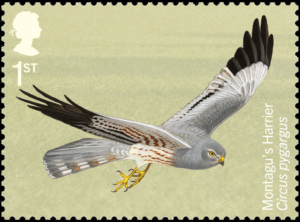 An elegant, long-winged bird of prey, hunting low over fields and marshes, often quartering back and forth in search of small birds and mammals. Exceptionally rare in the UK, down to just a single nesting pair in recent years. Nests (frequently in cereal crops) are often kept secret and protected to minimise disturbance. Always an uncommon bird, threatened by human persecution and loss of its preferred natural habitats.
An elegant, long-winged bird of prey, hunting low over fields and marshes, often quartering back and forth in search of small birds and mammals. Exceptionally rare in the UK, down to just a single nesting pair in recent years. Nests (frequently in cereal crops) are often kept secret and protected to minimise disturbance. Always an uncommon bird, threatened by human persecution and loss of its preferred natural habitats.
Migration: Arrives in April–May, departs in September. Winters in the Sahel zone of western and central Africa in semi-arid desert and savannah.
Nightjar
Caprimulgus europaeus
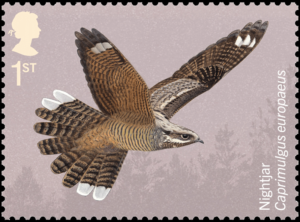 A curious owl-like bird of open woodlands, heathlands and moors, seen at dawn and dusk. Song is an eerie mechanical, insect-like churring that rises and falls in pitch. Eats insects, especially moths, catching them expertly in flight. Nightjar numbers dropped from the 1950s due to the loss of heathland but have recovered with increasing availability of clear-felled or young conifers in plantations, plus concerted action to restore heathland.
A curious owl-like bird of open woodlands, heathlands and moors, seen at dawn and dusk. Song is an eerie mechanical, insect-like churring that rises and falls in pitch. Eats insects, especially moths, catching them expertly in flight. Nightjar numbers dropped from the 1950s due to the loss of heathland but have recovered with increasing availability of clear-felled or young conifers in plantations, plus concerted action to restore heathland.
Migration: Arrives in late April–May, departs in July–August. Migrates through Iberia and across the Sahara to winter in tropical forests of central and southern Africa.
Pied Flycatcher
Ficedula hypoleuca
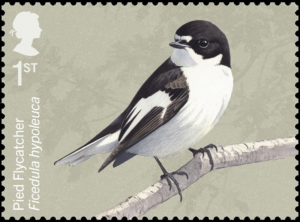 Male in spring is a striking black and white, not even the size of a sparrow. A hole-nesting bird living in mature deciduous woods, especially oaks, in the western and northern UK. Always active, it cocks its tail and flicks its wings. Some males are polygamous and may rear multiple families. Their fortunes reflect the poor state of our woods and changing conditions on migration and wintering grounds.
Male in spring is a striking black and white, not even the size of a sparrow. A hole-nesting bird living in mature deciduous woods, especially oaks, in the western and northern UK. Always active, it cocks its tail and flicks its wings. Some males are polygamous and may rear multiple families. Their fortunes reflect the poor state of our woods and changing conditions on migration and wintering grounds.
Migration: Arrives in mid-April–June, departs in August–September. Crosses the Sahara to winter in tropical, humid forests of western and central Africa.
Stone-curlew
Burhinus oedicnemus
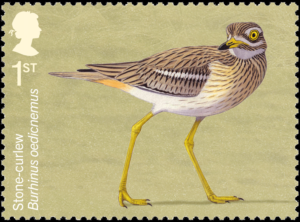 The odd-looking ‘goggle-eyed plover’ is a rare bird found mainly on the Brecklands of Norfolk and Suffolk and around Salisbury Plain. Most active at night, it has large yellow eyes that are adapted for hunting invertebrates in the twilight. It breeds on stony ground with sparse vegetation, including on arable farmland. Numbers crashed as its preferred habitat shrank away. A partial recovery is thanks to the protection efforts of farmers, landowners and conservation bodies.
The odd-looking ‘goggle-eyed plover’ is a rare bird found mainly on the Brecklands of Norfolk and Suffolk and around Salisbury Plain. Most active at night, it has large yellow eyes that are adapted for hunting invertebrates in the twilight. It breeds on stony ground with sparse vegetation, including on arable farmland. Numbers crashed as its preferred habitat shrank away. A partial recovery is thanks to the protection efforts of farmers, landowners and conservation bodies.
Migration: Arrives in March–April, departs in August–September. Winters in southwestern France, Spain and northwestern Africa.
Swallow
Hirundo rustica
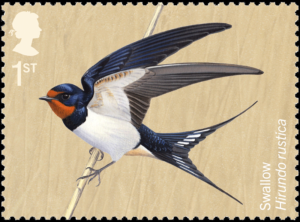 The first flash of the royal blue, red and white of a swallow across a field is eagerly anticipated as the start of spring. Males return to breed first and twitter for attention. A widespread bird of the countryside, it nests in sheds and farm buildings. Agile in flight, it feeds on flying insects caught on the wing. Renovation of traditional buildings and nest sites poses a threat, as do falling insect numbers.
The first flash of the royal blue, red and white of a swallow across a field is eagerly anticipated as the start of spring. Males return to breed first and twitter for attention. A widespread bird of the countryside, it nests in sheds and farm buildings. Agile in flight, it feeds on flying insects caught on the wing. Renovation of traditional buildings and nest sites poses a threat, as do falling insect numbers.
Migration: Arrives in April–May, departs in September–October. Travels through Iberia and western and central Africa to winter in South Africa.
Swift
Apus apus
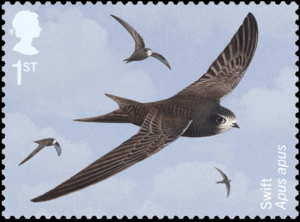 Its black scythe-shaped silhouette is unmistakable, as is its screaming call. Spends more time in flight than any other bird, even sleeping on the wing. Widespread in the British Isles. A steady downturn in numbers is due to the loss of nest sites in old buildings and probably a fall in insect food. The swifts’ marathon migration also makes them vulnerable to harsh weather conditions along the way.
Its black scythe-shaped silhouette is unmistakable, as is its screaming call. Spends more time in flight than any other bird, even sleeping on the wing. Widespread in the British Isles. A steady downturn in numbers is due to the loss of nest sites in old buildings and probably a fall in insect food. The swifts’ marathon migration also makes them vulnerable to harsh weather conditions along the way.
Migration: Arrives in late April–May, departs abruptly in August. Travels via Iberia into western Africa and on into central and southeastern Africa, reaching the Indian Ocean.
Turtle Dove
Streptopelia turtur
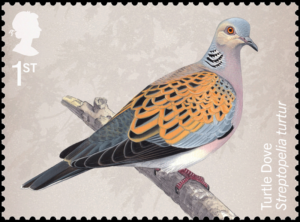 The purring song of this brightly coloured dove is the soundtrack of an English summer. Lives in scrub and woodland, heathland, in hedges and field margins on farmland. Found across the south and east of England. Numbers have dwindled as the countryside has changed and food supplies and nesting habitats have been lost. Added to this are the perils of annual migration through a hostile Mediterranean, where the species is hunted.
The purring song of this brightly coloured dove is the soundtrack of an English summer. Lives in scrub and woodland, heathland, in hedges and field margins on farmland. Found across the south and east of England. Numbers have dwindled as the countryside has changed and food supplies and nesting habitats have been lost. Added to this are the perils of annual migration through a hostile Mediterranean, where the species is hunted.
Migration: Arrives in May, departs in July–September. Migrates south through Iberia and northwestern Africa to winter in tropical western Africa.
Yellow Wagtail
Motacilla flava
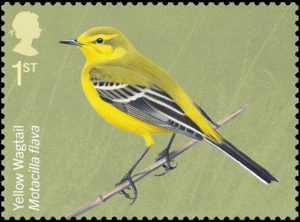 Has a striking yellow head and mainly bright lemon plumage, with a long, white-edged black tail. Found in central and eastern England, where numbers are falling. Breeds on wet grasslands, water meadows and marshes, but also in arable crops. Its preferred traditional habitats are being lost to drainage and conversion, and as mixed farming has waned. These birds are also vulnerable to harsh conditions along their migration routes.
Has a striking yellow head and mainly bright lemon plumage, with a long, white-edged black tail. Found in central and eastern England, where numbers are falling. Breeds on wet grasslands, water meadows and marshes, but also in arable crops. Its preferred traditional habitats are being lost to drainage and conversion, and as mixed farming has waned. These birds are also vulnerable to harsh conditions along their migration routes.
Migration: Arrives in March–May (males return first) and departs in August–September. Migrates through Iberia into northern Africa, crossing the Sahara to winter in sub-Saharan western Africa.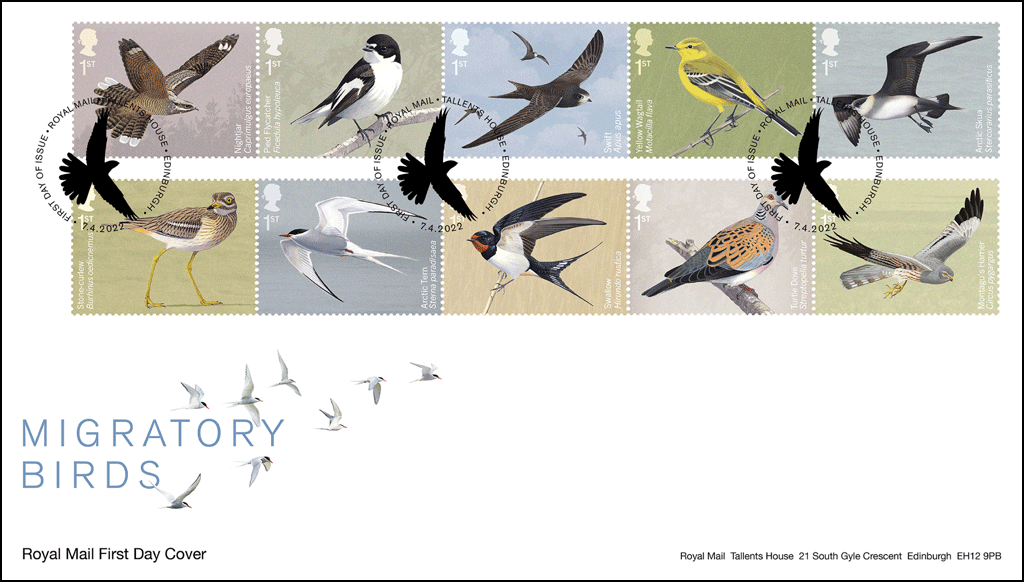
Philatelic Products
Stamp Set AS8400 £9.50
First Day Envelope AE440 £0.30
Presentation Pack AP505 £10.40
First Day Cover – Stamps AF485 £12.05
Stamp Souvenir AW214 £12.05
Postcards AQ321 £4.50
Framed Stamps N3286 £19.99
Full Sheet (x50 Nightjar – Arctic Skua) AS8400AFS £47.50
Half Sheet (x25 Nightjar – Arctic Skua) AS8400AHS £23.75
Full Sheet (x50 Stone Curlew – Montagu’s Harrier) AS8400BFS £47.50
Half Sheet (x25 Stone Curlew – Montagu’s Harrier) AS8400BHS £23.75 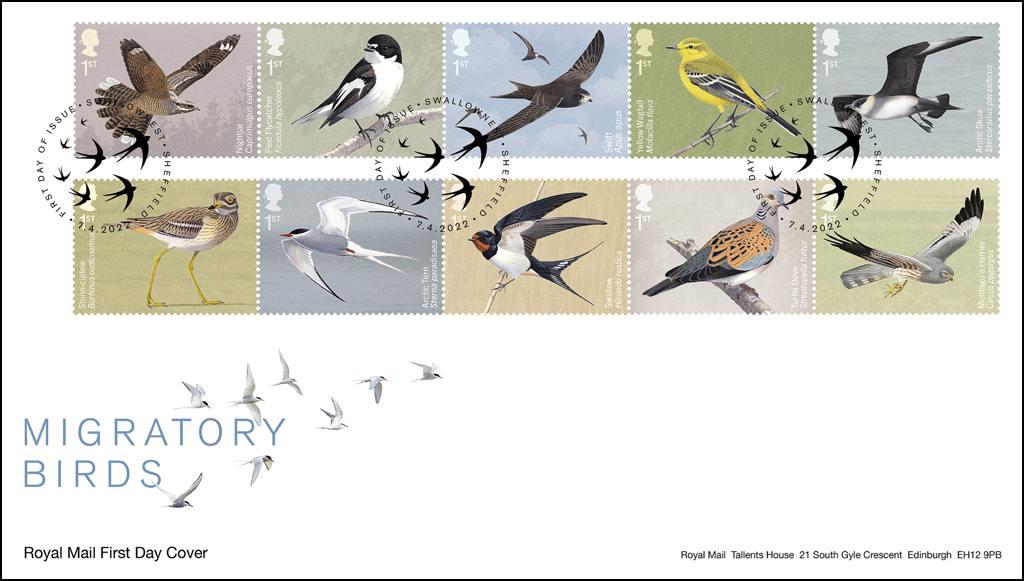 There are three first day cancellations available for this issue, two of them pictorials:
There are three first day cancellations available for this issue, two of them pictorials: 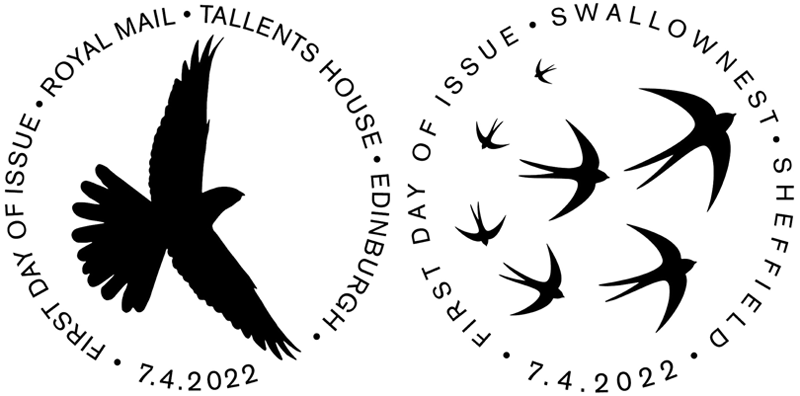 Technical Specifications:
Technical Specifications:
|
Number of stamps
Value of Stamps
Design
Illustrations
Stamp Format
Number per sheet
Stamp Size
Printer
Print Process
Perforations
Phosphor
Gum |
Ten
1st class
hat-trick design
Killian Mullarney
landscape
25/50
41mm x 30mm
International Security
lithography
14.5 x 14
bars as appropriate
PVA |

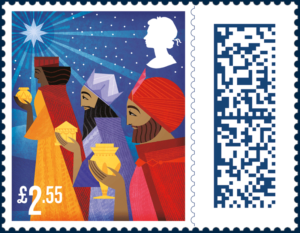 exclusively illustrated by award-winning artist, Katie Ponder.
exclusively illustrated by award-winning artist, Katie Ponder.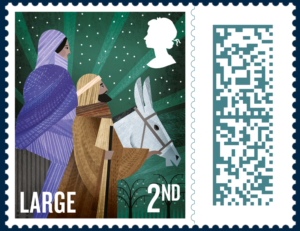 This year’s stamps will be the last Christmas issue to feature the silhouette of the Late Queen Elizabeth.
This year’s stamps will be the last Christmas issue to feature the silhouette of the Late Queen Elizabeth.